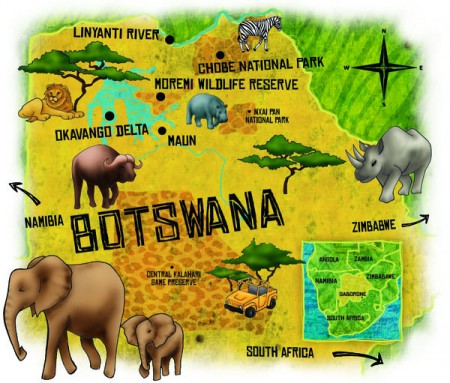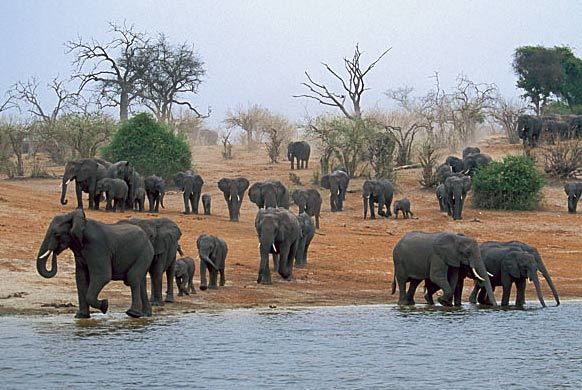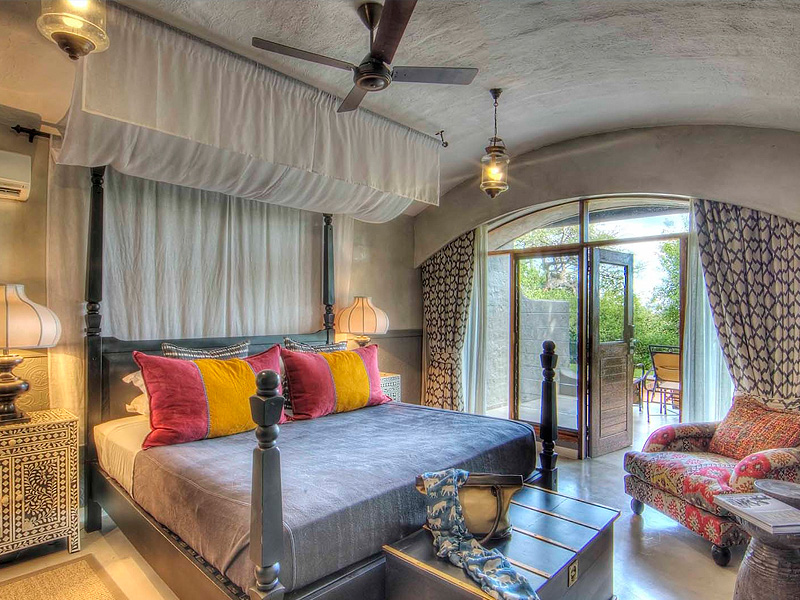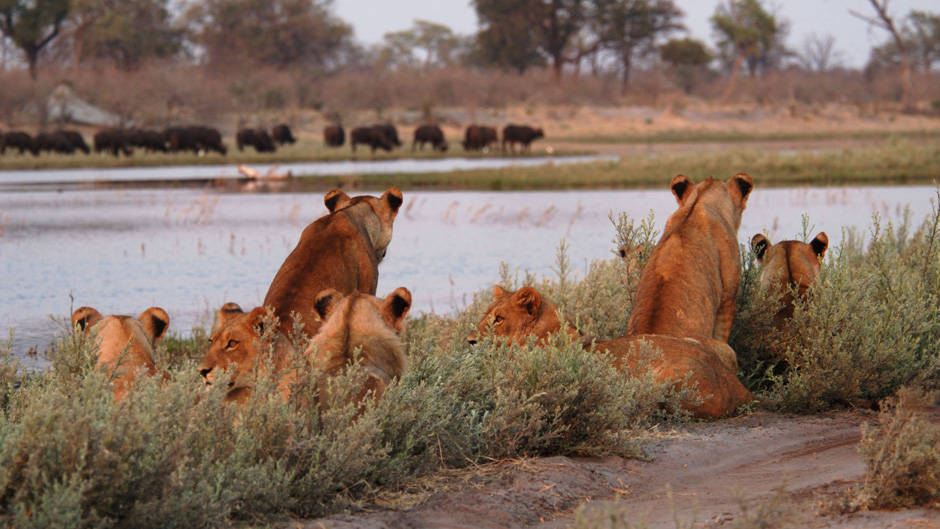The Chobe National Park is located in Botswana's North West District, with the Chobe River providing both the park's northern boundary and its name. It is flanked in the south west by the Okavango Delta / Moremi Game Reserve, and by the forested Zimbabwe border to the east. From its northeast entry gate, it's less than 100km to Victoria Falls.
 ©Georgie Fearns
©Georgie FearnsSize & Location: 11 700km² in north east Botswana, bordered by the Chobe River in the North
When to visit: May - October (dry season, best for game viewing)
Climate: Dry in the cooler months with low humidity. Daytime maximum temperatures at 32° C
Rainfall: 600mm per annum varying
The Chobe National Park, which is the second largest national park in Botswana and covers 10,566 square km, has one of the greatest concentrations of game found on the African continent. Its uniqueness in the abundance of wildlife and the true African nature of the region, offers a safari experience of a lifetime.
The park is divided into four distinctly different eco systems:
Serondela with its lush plains; dense forests in the Chobe River area in the extreme north-east; the Savuti Marsh in the west; and the Linyanti Swamps in the north-west the hot dry hinterland in between.
A major feature of Chobe National Park is its elephant population, currently estimated at around 120,000. The Chobe elephant are migratory, making seasonal movements of up to 200 km from the Chobe and Linyanti rivers, where they concentrate in the dry season, to the pans in the southeast of the park, to which they disperse in the rains. The elephants, in this area have the distinction of being the largest in body size of all living elephants though the ivory is brittle and you will not see many huge tuskers among these rangy monsters.
 ©rhinoafrica.com
©rhinoafrica.com ©botswana.co.za
©botswana.co.zaRiver cruises reveal almost wall-to-wall animals on the banks of the Chobe river, and you even have the option of staying on a houseboat.
 ©safarinut.blogspot.com
©safarinut.blogspot.comOften described as one of the best wildlife-viewing areas in Africa today, Savuti boasts one of the highest concentrations of wildlife left on the African continent. Animals are present during all seasons, and at certain times of the year their numbers can be staggering. If you allow yourself adequate time here (a minimum of three to four days is recommended) you will probably see nearly all the major species: giraffe, elephant, zebra, impala, tsessebe, roan, sable, wildebeest, kudu, buffalo, waterbuck, warthog, eland and accompanying predators including lion, hyena, jackal, bat-eared fox and possibly even cheetah and wild dog.
Savuti is famous for its predators, particularly its resident lions and spotted hyena populations.
 ©natgeotv.com
©natgeotv.comMosquitoes are prevalent throughout the park and visitors are strongly advised to take anti-malarial prophylactics.
There are three main camping sites within the park, all of which are equipped with shower-toilet facilities and require booking in advance:
The new and modern one at Ihaha was recently built in order to replace the closed one at Serondela. This camping site is also more remote in nature comparatively to the former one at Serondela.
 ©travelpod.com
©travelpod.comAt Savuti there is another excellent new camping site, which lies at 172 km Southwest of Sedudu Gate. This camping ground overlooks the Savuti Channel.
 ©travelpod.com
©travelpod.comA third, smaller camping ground can be found at Linyanti, lying at 39 km Northwest of Savuti. The camping ground here overlooks the Linyanti River so there are many chances of seeing and hearing hippos in the river. Off the beaten tracks, the Linyanti camp is much quieter than the previously described ones. There is an ablution block with toilets and showers, and a boiler to heat water. The Linyanti has a number of private concessions where Luxury Camps has been built with the aim of hosting affluent European & American Tourists.
 ©4x4community.co.za
©4x4community.co.zaFor reservations enquiries go to: http://www.mewt.gov.bw/DWNP




